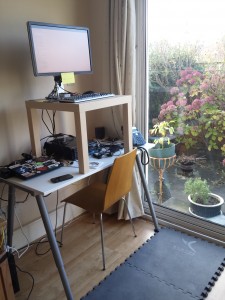NVIDIA has just released the Jetpack 6 Developer Preview for the NVIDIA Jetson Orin hardware. The thing that is most exciting about this release is they finally support the ability to use upstream kernels and other Linux distributions. This means you can start to use both RHEL (9.3 and later) and Fedora on the Jetson Orin hardware! This has been a LONG time coming, something I’ve been involved with for 5 years!
So while this is a developer preview, AKA public Beta, it’s still very usable and for people that are interested in using other Linux distributions now is the time to get stuck in. Like all things it’s not perfect and there’s still work to be done, but many hands do make light work!
You start by downloading the BSP from there you can follow the following instructions and you should end up with a device you can easily install Fedora 39 or RHEL 9.3 or other distros with the appropriate bits enabled.
To flash the firmware you need to follow the Orin AGX guide for recovery and cabling, for Orin NX/nano you need to use the HW pins near the mSD card, to put the device in recovery mode and cabling then do the following for Orin AGX:
$ tar zvf Jetson_Linux_R36.2.0_aarch64.tbz2 $ cd Linux_for_Tegra/ $ lsusb|grep -i nv Bus 003 Device 044: ID 0955:7045 NVIDIA Corp. [unknown] Bus 003 Device 045: ID 0955:7023 NVIDIA Corp. [unknown] $ sudo ./flash.sh p3737-0000-p3701-0000-qspi external removed a lot of output *** The target generic has been flashed successfully. *** Make the target filesystem available to the device and reset the board to boot from external external. $
The command for other Orin devices such as NX and Nano will be similar, you’ll just have to swap the p3737 variable, eg for Orin Nano use: sudo ./flash.sh p3737-0000-p3701-0000-qspi external.
Once the flash completes the device will reboot and you will be able to use the usual mechanisms to install your OS, whether the RHEL or Fedora installers or a Fedora Arm image. I’ve tested running OSes off both the microSD and a NVME card, plus installing off USB, the DisplayPort output should work in EFI console mode. The firmware is based upon the widely known TianoCore/EDK2 so the firmware interface should be straight forward. For those that may need a serial console if it’s not automatically detected you can use console=ttyAMA0,115200, This runs off the microUSB port on /dev/ttyACM2 on the host device.
For hardware vendors that have hardware based on the NVIDIA Orin hardware they will be able to adopt and make this available to their customers that may wish to run distributions other than L4T. If they are unsure feel free to reach out to me in the usual locations.
